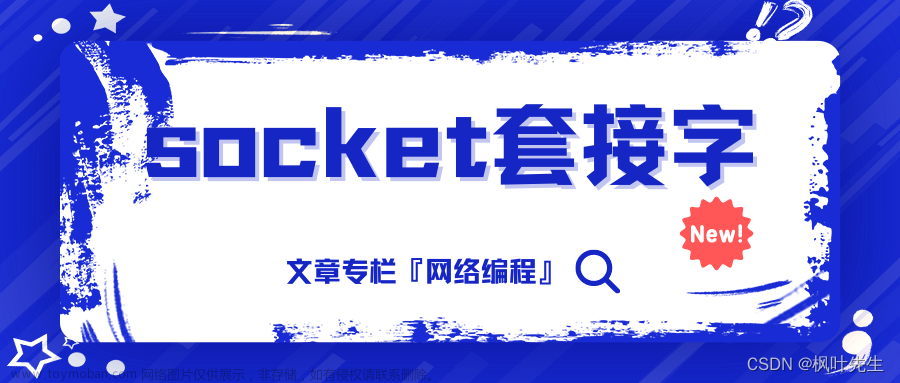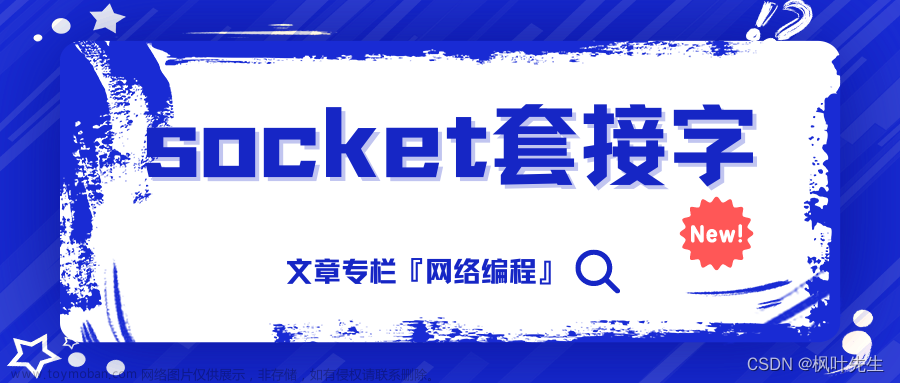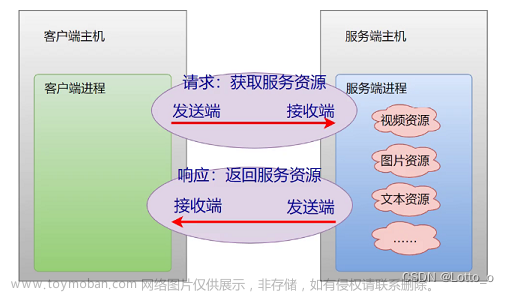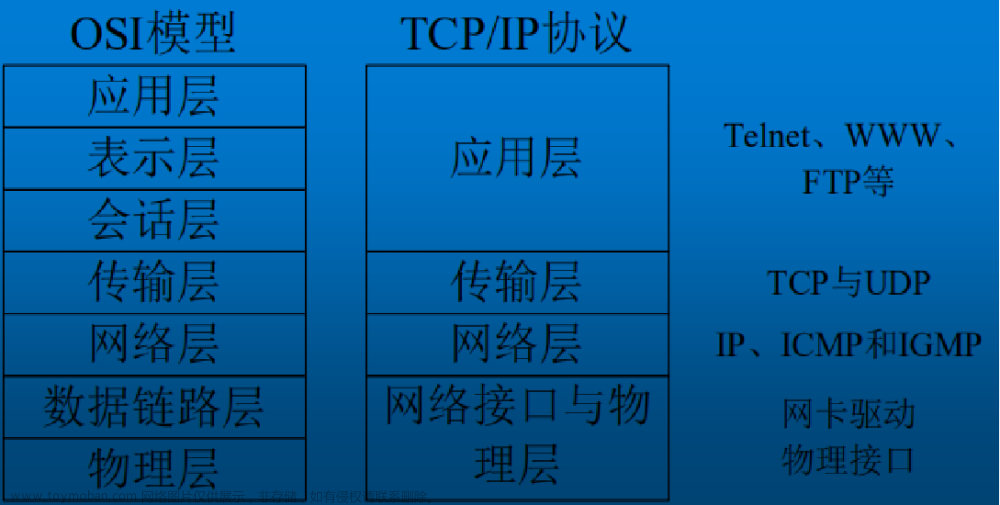一、QT如果要进行网络编程首先需要在.pro中添加如下代码:
QT += network
二、QT下的TCP通信过程
Qt中提供的所有的Socket类都是非阻赛的
Qt中常用的用于socket通信的套接字类
QTcpServer
用于TCP/IP通信,作为服务器端套接字使用
QTcpSocket
用于TCP/IP通信,作为客户端套接字使用。
QUdpSocket
用于UDP通信,服务器,客户端均使用此套接字
三、描述Qt下Tcp通信的整个流程
服务器端:
1. 创建用于监听的套接字
//监听套接字
tcpServer = new QTcpServer(this);
2. 给套接字设置监听
tcpServer->listen(QHostAddress::Any,8888);
setWindowTitle("服务器:8888");
3. 如果有连接到来, 监听的套接字会发出信号newConnected
4. 接收连接, 通过nextPendingConnection()函数, 返回一个QTcpSocket类型的套接字对象(用于通信)
connect(tcpServer,&QTcpServer::newConnection,[=](){
//取出建立好连接的套接字
tcpSocket = tcpServer->nextPendingConnection();
});
5. 使用用于通信的套接字对象通信
(1). 发送数据: write
if(NULL == tcpSocket)
{
return;
}
//获取编辑区内容
QString str = ui->textEditWrite->toPlainText();
//给对方发送数据,使用套接字是tcpSocket
tcpSocket->write(str.toUtf8().data());
(2). 接收数据: readAll/read
connect(tcpSocket,&QTcpSocket::readyRead,[=](){
//从通信套接字中取出内容
QByteArray array = tcpSocket->readAll();
array = "客户端;" + array;
ui->textEditRead->append(array);
});客户端:
1. 创建用于通信的套接字
tcpSocket = new QTcpSocket(this);
setWindowTitle("客户端");
2. 连接服务器: connectToHost
//获取服务器IP和端口
QString ip = ui->lineEditIP->text();
qint16 port = ui->lineEditPort->text().toInt();
//主动与服务器建立连接
tcpSocket->connectToHost(QHostAddress(ip),port);
connect(tcpSocket,&QTcpSocket::connected,[=](){
ui->textEditRead->setText("成功和服务器建立好连接");
});
3. 连接成功与服务器通信
(1).发送数据: write
//获取编辑框内容
QString str = ui->textEditWrite->toPlainText();
//发送数据
tcpSocket->write(str.toUtf8().data());
(2).接收数据: readAll/read
connect(tcpSocket,&QTcpSocket::readyRead,[=](){
//获取对方发送的内容
QByteArray array = tcpSocket->readAll();
//追加到编辑区中
array = "服务端:" + array;
ui->textEditRead->append(array);
});四、完整代码
服务端:
 文章来源:https://www.toymoban.com/news/detail-497047.html
文章来源:https://www.toymoban.com/news/detail-497047.html
setverwidget.h
#ifndef SERVERWIDGET_H
#define SERVERWIDGET_H
#include <QWidget>
#include <QTcpServer> //监听套接字
#include <QTcpSocket> //通信套接字
namespace Ui {
class ServerWidget;
}
class ServerWidget : public QWidget
{
Q_OBJECT
public:
explicit ServerWidget(QWidget *parent = 0);
~ServerWidget();
private slots:
void on_buttonSend_clicked();
void on_pushButton_2_clicked();
private:
Ui::ServerWidget *ui;
QTcpServer *tcpServer;//监听套接字
QTcpSocket *tcpSocket;//通信套接字
};
#endif // SERVERWIDGET_H
serverwidget.cpp
#include "serverwidget.h"
#include "ui_serverwidget.h"
ServerWidget::ServerWidget(QWidget *parent) :
QWidget(parent),
ui(new Ui::ServerWidget)
{
ui->setupUi(this);
tcpServer = NULL;
tcpSocket = NULL;
//监听套接字
tcpServer = new QTcpServer(this);
tcpServer->listen(QHostAddress::Any,8888);
setWindowTitle("服务器:8888");
connect(tcpServer,&QTcpServer::newConnection,[=](){
//取出建立好连接的套接字
tcpSocket = tcpServer->nextPendingConnection();
//获取对方的IP和端口
QString ip = tcpSocket->peerAddress().toString();
qint16 port = tcpSocket->peerPort();
QString temp = QString("[%1:%2]:连接成功").arg(ip).arg(port);
ui->textEditRead->setText(temp);
connect(tcpSocket,&QTcpSocket::readyRead,[=](){
//从通信套接字中取出内容
QByteArray array = tcpSocket->readAll();
array = "客户端;" + array;
ui->textEditRead->append(array);
});
});
}
ServerWidget::~ServerWidget()
{
delete ui;
}
void ServerWidget::on_buttonSend_clicked()
{
if(NULL == tcpSocket)
{
return;
}
//获取编辑区内容
QString str = ui->textEditWrite->toPlainText();
//给对方发送数据,使用套接字是tcpSocket
tcpSocket->write(str.toUtf8().data());
ui->textEditWrite->setText("");
}
void ServerWidget::on_pushButton_2_clicked()
{
if(NULL == tcpSocket)
{
return;
}
//主动和客户端端口连接
tcpSocket->disconnectFromHost();
tcpSocket->close();
tcpSocket = NULL;
}
客户端:
 文章来源地址https://www.toymoban.com/news/detail-497047.html
文章来源地址https://www.toymoban.com/news/detail-497047.html
clientwidget.h
#ifndef CLIENTWIDGET_H
#define CLIENTWIDGET_H
#include <QWidget>
#include <QTcpSocket>//通信套接字
namespace Ui {
class ClientWidget;
}
class ClientWidget : public QWidget
{
Q_OBJECT
public:
explicit ClientWidget(QWidget *parent = 0);
~ClientWidget();
private slots:
void on_buttonConnect_clicked();
void on_buttonSend_clicked();
void on_buttonClose_clicked();
private:
Ui::ClientWidget *ui;
QTcpSocket *tcpSocket;//通信套接字
};
#endif // CLIENTWIDGET_H
clientwidget.cpp
#include "clientwidget.h"
#include "ui_clientwidget.h"
#include <QHostAddress>
ClientWidget::ClientWidget(QWidget *parent) :
QWidget(parent),
ui(new Ui::ClientWidget)
{
ui->setupUi(this);
tcpSocket = NULL;
tcpSocket = new QTcpSocket(this);
setWindowTitle("客户端");
connect(tcpSocket,&QTcpSocket::connected,[=](){
ui->textEditRead->setText("成功和服务器建立好连接");
});
connect(tcpSocket,&QTcpSocket::readyRead,[=](){
//获取对方发送的内容
QByteArray array = tcpSocket->readAll();
//追加到编辑区中
array = "服务端:" + array;
ui->textEditRead->append(array);
});
}
ClientWidget::~ClientWidget()
{
delete ui;
}
void ClientWidget::on_buttonConnect_clicked()
{
//获取服务器IP和端口
QString ip = ui->lineEditIP->text();
qint16 port = ui->lineEditPort->text().toInt();
//主动与服务器建立连接
tcpSocket->connectToHost(QHostAddress(ip),port);
}
void ClientWidget::on_buttonSend_clicked()
{
//获取编辑框内容
QString str = ui->textEditWrite->toPlainText();
//发送数据
tcpSocket->write(str.toUtf8().data());
ui->textEditWrite->setText("");
}
void ClientWidget::on_buttonClose_clicked()
{
//主动和对方断开连接
tcpSocket->disconnectFromHost();
tcpSocket->close();
}
到了这里,关于Qt下Tcp套接字(socket)通信的整个流程的文章就介绍完了。如果您还想了解更多内容,请在右上角搜索TOY模板网以前的文章或继续浏览下面的相关文章,希望大家以后多多支持TOY模板网!













